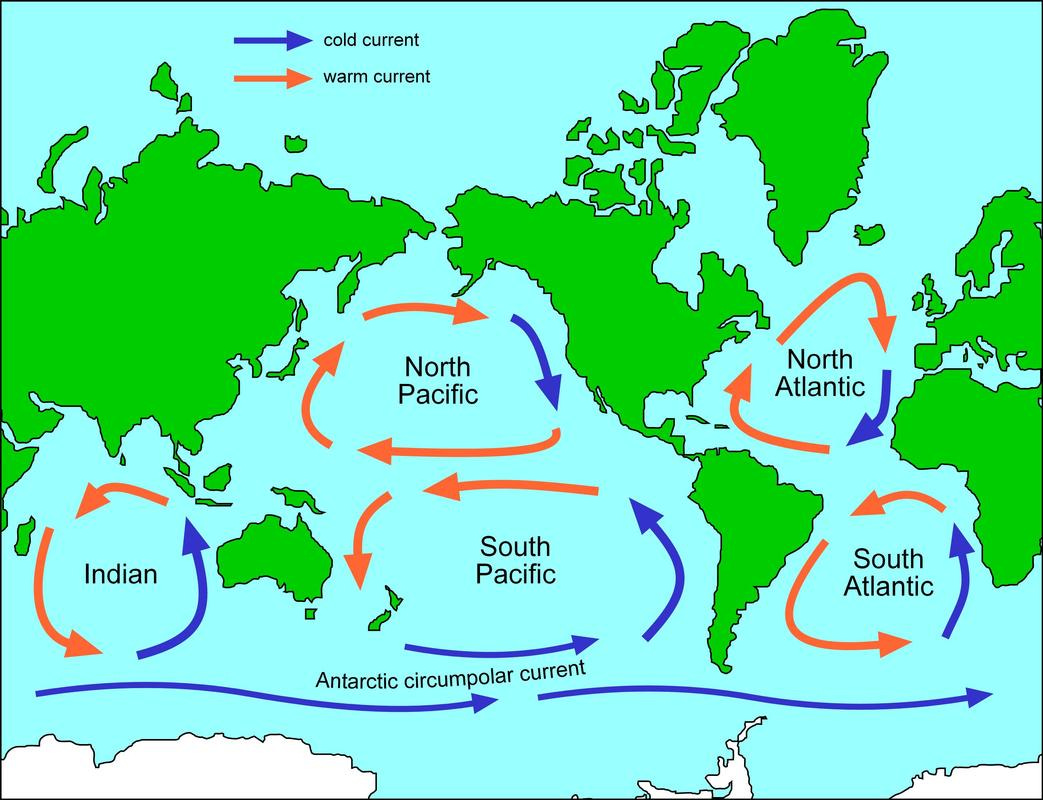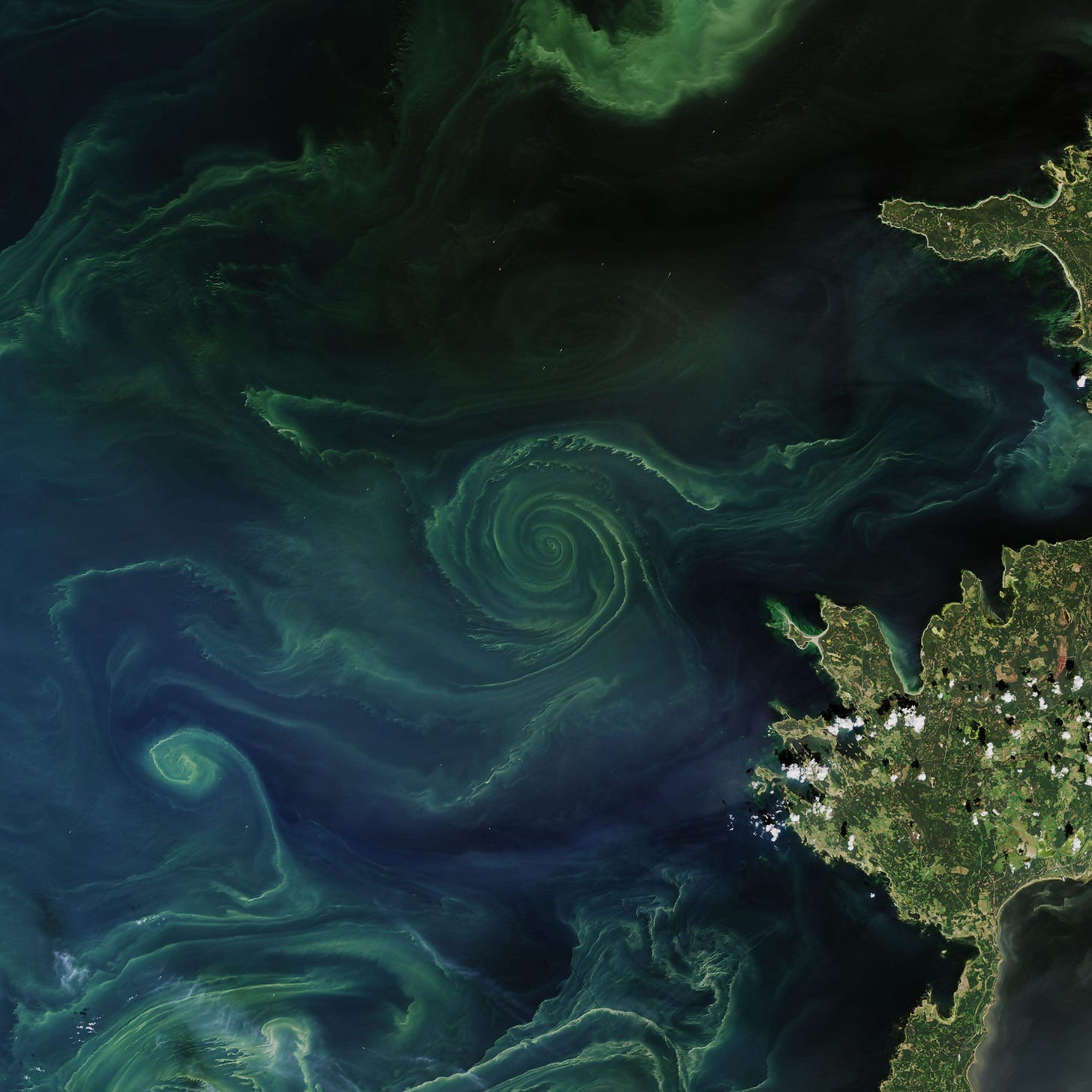Perhaps not surprisingly, the industry has mostly moved on from re-engineering their production processes to be less carbon efficient to carbon sequestration.
The reality is that many processes we rely on, just cannot be made carbon-efficient.
What we need instead is a gigatonne scale carbon sequestration capability.
And we need it to be literally dirt cheap.
Likewise, we need it to work in a way that it is not competing with people for resources.
The reason for that is quite simple, because if it competes politicians and entrepreneurs always have to prioritize between people and nature.
As a humanist, I believe human progress shouldn’t be stalled as there are still billions of people living suboptimal lives.
Carbon sequestration should not compete with people
In any case, we cannot change human nature and lower prices will always be preferable to higher prices and distant suffering.
Luckily for us, there are five major areas of the world that are utterly devoid of people
Meet the oceanic gyres

Oceanic gyres are essentially a very large version of what happens when you drain your sink.
At the center of an Oceanic gyre, anything that is on the surface gets dragged down into the ocean’s depth.
It’s called downwelling.
Ocean vortexes are utterly devoid of life, even plant life
As shown below in the nutrient map of the ocean, you can see that these five areas are dead to the extent that not even algae grow there.
The reason is simple, nutrients disappear into the depths of the ocean and algae just cannot grow.
This is a nutrient map of the ocean.
The only thing that grows there right now is unsinkable plastic
You probably have seen the pictures but you probably didn’t think “hey, why are those pieces of plastic not full of algae”.
As sad as the plastic belt may be, there is one big upside to it.
Nobody spent any money getting that unsinkable plastic smack in the middle of the ocean vertex.
Essentially, if we build a floatable vessel and just drop it at a place it will enter an ocean vertex, it will arrive at the center eventually.
That means we can deliver nutrients to the ocean vertex at-scale at near-zero cost.
Obviously we don’t want our vessel to add to the problem of floatable plastic so in reality we will most likely use biodegradable vessels (not sure what the state of bioplastics is) or worst-case use heavier-than-water plastic vessels that would sink to the deep ocean once degraded.
It just has to last long enough to reach the center of the ocean vertex.
Once it degrades, a specially mixture of nutrients would kick off an algae bloom.
The algae would grow like crazy and in the process it will absorb carbon from the sea.
But then, it will run out of nutrients and die off.
That dead algae bloom will then sink to the bottom of the ocean as these ocean vertices are constantly pulling down everything that doesn’t float.
Once it is below a certain depth, the dead algae no longer decay because there is no oxygen left.
It will continue to sink to the depths of the ocean, starting the cycle to become a future oil field.
We can monitor the algae bloom from space
Which means we can do carbon accounting and verification, an essential element of carbon credits.
The size of the algae bloom directly correlates to the amount of carbon removed from the earth.
The biggest issue would be to understand exactly which ship caused which algae bloom.
Identification problem
In order for carbon credits to be issued, it’s necessary to confirm the carbon sequestration.
The verification problem is in fact the hardest part, while you can identify algae blooms from space. When there are companies competing with each other launching those vessels with ocean fertilizer. It’s actually very difficult to measure which algae bloom belongs to which vessel.
Important to understand is that you don’t want to be sending ships with actual people there, that is just painful.
Radio beacons ($$)
Measurable by overflight
Radioactive markers ($)
Radioactive material is already used to study ocean currents, presumably a unique radioactive marker could be assigned to each company so that the algae bloom can be allocated to the right company.
This could be by overflight or from space.
Controlled release ()
You could add electronics to the ships and trigger the release remotely however this would greatly increase the cost.
Verification problem
The radioactive marker is actually good because if you can measure it from space, that means you can also track the results over time.
Should the algae bloom resurface, presumably some of that radioactive material would have been absorbed in the algae and it would be picked up from space invalidating the carbon credit.
Over time, methods would be perfected so that dead algae stay down.
How much does it cost?
The solution requires quite some upfront investment into satellite monitoring and R&D into the vessels and how to make sure they degrade slow enough over time.
However, those are fixed costs.
The variable cost per Gigatonne sequestered can be
Cost of the vessel (biodegradable ship)
Cost of the fertilizer mix
Cost of the radioactive marker
Cost to release the ship
Mass production would reduce the costs of the vessel and its release over time and the radioactive marker has to only be applied in very low quantities.
The most important factor is the cost of the fertilizer.
Estimating the cost of the fertilizer
At the time of writing, carbon credits trade around 76 USD/tonne of carbon removed.
Thanks to Alfred Redfield who discovered the Redfield Ratio, we know that we need to deliver 16 atoms of nitrogen and 1 atom of phosphor in order to remove 106 atoms of carbon.
That’s 1kg of phosphor can remove 106kg of carbon.
Ammonium nitrate is dirt-cheap at 380 usd/tonne and contains two atoms of nitrogen.
Triple superphosphate is at 425 usd/tonne and contains one atom of phosphor.
Mixing those two fertilizers, in the right measure you get 8x360+425 = 3305 USD
That would be sufficient to remove 106 tonnes of carbon.
It would cost 33 USD of fertilizer to remove 1 tonne of carbon and earn 74 USD in carbon credits.
That leaves 41 USD for the vessel, losses and monitoring techniques.
The vessel itself could be as simple as a plastic bottle with air trapped inside or a wooden container that is dropped off a ship, it could even be a Panamax class container ship pumping fertilizer into the ocean.
The actual vessel design can vary but it must be able to survive storms and reliably float to the center of the oceanic gyre.
That’s it, this technique can scale up reliably to a gigatonne carbon removal method that would enable our civilization to grow unimpeded.







